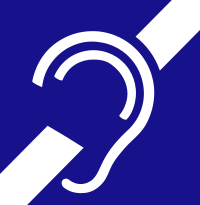Hearing Loss, Noise-Induced, Susceptibility To

Description
Regular exposure to continuous noise or an exposure to a single acoustic overstimulation can lead to noise-induced hearing loss (NIHL). Millions of people worldwide are exposed daily to harmful levels of noise, making NIHL a likely widespread occupational health hazard. NIHL is a complex disease resulting from an interaction between genetic and environmental factors and is highly variable between individuals (Konings et al., 2009).
MappingAssociations Pending Confirmation
In a study of 218 Swedish noise-exposed male workers, Van Laer et al. (2006) identified the asp85-to-asn variant in the KCNE1 gene (rs1805128; 176261.0005) on chromosome 21q22 as the possible cause of susceptibility to NIHL (p = 0.023). However, the authors suggested that further studies were necessary before KCNE1 D85N could be designated as a causative SNP.
Heat-shock proteins (HSPs) are induced after exposure to severe noise. When first induced by exposure to moderate sound levels, they can protect the ear from damage from excessive noise exposure. Konings et al. (2009) analyzed SNPs in 3 HSP genes in 206 Swedish and 238 Polish DNA samples of individuals exposed to occupational noise. In the Swedish sample set, there was a significant association between all 3 SNPs and hearing loss: rs1043618 in the HSPA1A gene (140550) on chromosome 6p21 (p = 0.037, odds ratio of 0.61 for the GG genotype), rs1061581 in the HSPA2 gene (140560) on chromosome 14q24 (p = 0.033, odds ratio of 1.63 for the GG genotype), and rs2227956 in the HSPA1L gene (140559) on chromosome 6p21 (p = 0.010, odds ratio of 2.09 for the TT genotype). In the Polish sample set, only rs2227956 in the HSPA1L gene showed a significant genotype effect (p = 0.048, odds ratio of 1.75 for the TT genotype). The findings suggested an association between variation in HSP genes with NIHL.